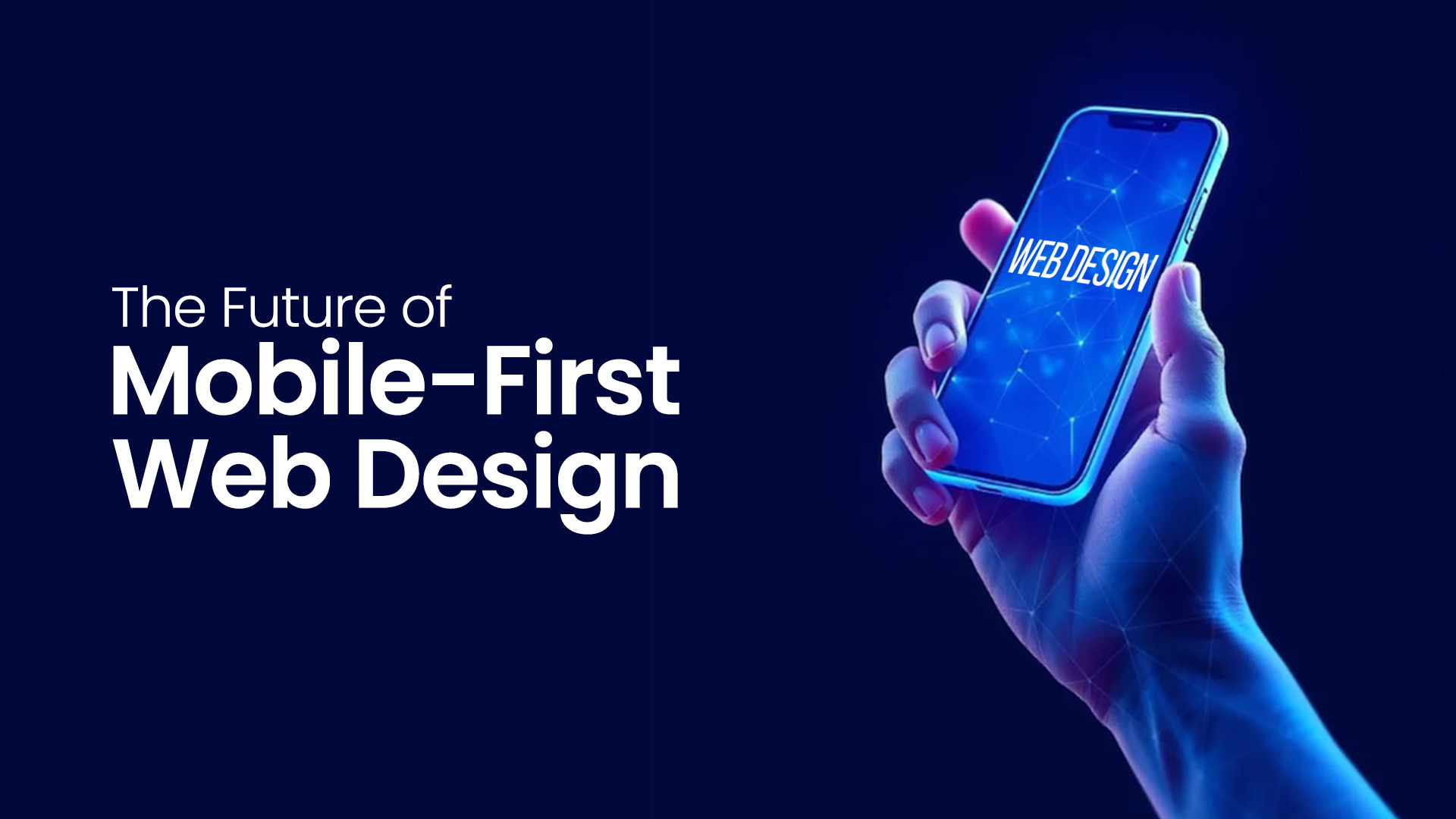In today’s digital landscape, where smartphones outnumber traditional desktop devices, the importance of mobile-first web design cannot be overstated. As technology continues to evolve and user expectations shift, designing websites with a mobile-first approach is not just a trend but a necessity for businesses aiming to thrive online. This blog explores the future of mobile-first web design, highlighting key trends, benefits, and best practices in website development, with insights from GL Infotech.
Understanding Mobile-First Design
Mobile-first web design is a strategy where designers and developers create websites starting with the mobile version before scaling up to larger screens. This approach ensures that mobile users, who often have different needs and behaviors than desktop users, receive an optimized experience. With more than half of global web traffic now coming from mobile devices, prioritizing mobile-first design makes sense in the realm of web design.

Key Trends Shaping Mobile-First Design
- Mobile-First Responsive Design
The future of mobile-first design lies in responsive techniques. Mobile-first responsive design allows a website to adjust fluidly to any screen size, providing an optimal user experience across all devices. This strategy not only enhances usability but also ensures consistency in branding and functionality across platforms. - Progressive Web Apps (PWAs)
Progressive Web Apps combine the best of web and mobile applications. They provide a fast, reliable, and engaging experience, even in low-connectivity environments. PWAs are responsive, work offline, and can be installed on a user’s home screen, offering an app-like experience without the need for a download. As businesses seek to enhance user engagement and retention, PWAs are likely to become a cornerstone of mobile-first web design in website development, and GL Infotech is at the forefront of this evolution. - Voice User Interface (VUI)
With the rise of smart speakers and voice-activated devices, integrating voice user interfaces into mobile design is essential. VUI enables users to navigate websites through voice commands, offering a hands-free experience that can significantly improve accessibility. As voice recognition technology continues to advance, we can expect more websites to incorporate VUI, enhancing the overall user experience in web design. - Minimalistic Design and Microinteractions
The future of mobile-first design is trending toward minimalism. Users appreciate clean, uncluttered interfaces that enhance usability. Minimalistic design, combined with microinteractions—small animations or design elements that engage users—creates a delightful experience. These elements guide users through tasks, provide feedback, and make the experience more enjoyable. - Augmented Reality (AR) Integration
Augmented reality is revolutionizing the way users interact with mobile applications. By overlaying digital information onto the real world, AR can create immersive experiences. For instance, e-commerce brands are leveraging AR to allow users to visualize products in their environment before making a purchase. As AR technology becomes more accessible, we can anticipate its integration into mobile-first web design, adding another layer to website development.
Future of Mobile-First Design
The future of mobile-first design is poised for exciting developments. As mobile technology continues to advance, we can expect enhanced functionalities, improved user interfaces, and greater integration of emerging technologies. Businesses will need to remain agile, adapting to changes in user behavior and technology to maintain a competitive edge in their website development efforts.
Mobile-First Development Strategies
Implementing effective mobile-first development strategies is essential for optimizing user experience. Here are some strategies to consider:
- Prioritize Content: Identify the most crucial content and features for mobile users. Design with their needs in mind, focusing on simplicity and clarity in web design.
- Optimize Loading Speed: Mobile users expect fast-loading websites. Optimize images, leverage browser caching, and minimize HTTP requests to enhance performance in website development.
- Use Touch-Friendly Elements: Design buttons and interactive elements that are easy to tap. Ensure ample spacing to avoid accidental clicks.
- Test on Multiple Devices: Regularly test your designs on various mobile devices to ensure compatibility and a seamless experience across different screen sizes.

Benefits of Mobile-First Design
- Improved User Experience: By prioritizing mobile users, websites can provide faster loading times, easier navigation, and a more intuitive layout, leading to higher user satisfaction.
- Higher Search Engine Rankings: Search engines like Google favor mobile-friendly websites, meaning that adopting a mobile-first approach can boost SEO rankings and visibility in the competitive landscape of web design.
- Increased Conversion Rates: Optimized mobile experiences lead to higher conversion rates, as users are more likely to engage with content, complete purchases, or sign up for services on a well-designed mobile site.
As we move forward, mobile-first web design will continue to evolve, driven by technological advancements and changing user behaviors. By embracing responsive design, integrating emerging technologies, and focusing on user experience, businesses can position themselves for success in a mobile-first world. The future is bright for mobile-first web design in website development, and those who prioritize this approach will undoubtedly reap the rewards.
Ready to elevate your online presence with cutting-edge mobile-first web design? Contact GL Infotech today to explore how our expert team can help you implement mobile-first strategies that enhance user experience and drive business growth. Embrace the change, and watch your digital presence thrive in the mobile era!
Web Design & Development Ecommerce Web Development ERP Software Development

